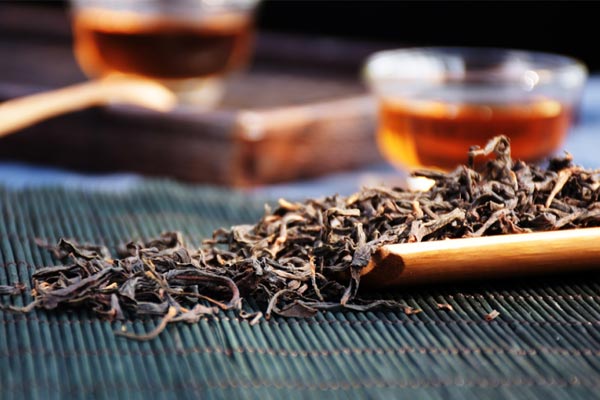Scented tea is a traditional drink well known to Chinese people, combining delicious taste with health-promoting properties.
Which of the commonly available varieties—Hangbai chrysanthemum, Wuyuan imperial chrysanthemum, Jinsi imperial chrysanthemum, and Chun'an purple chrysanthemum—is the healthiest?
Recently, a research team from the Zhejiang Academy of Agricultural Sciences published a paper titled "Metabolomics profiles and health-promoting functions of tea chrysanthemum using comparative analysis and network pharmacology" in the journal Food Bioscience, providing the answer.

◆ Research Results
01. Health Benefits of Chrysanthemum Tea
The researchers first conducted a metabolomics analysis of four commercially available chrysanthemum teas. The results identified a total of 2,188 metabolites, encompassing key components such as flavonoids, terpenes, phenolic acids, and lipids.
These metabolites are the core sources of chrysanthemum tea's flavor and health benefits. For example, flavonoids are associated with antioxidant and vascular protection, terpenes have the potential to aid relaxation, and phenolic acids have some anti-inflammatory effects.
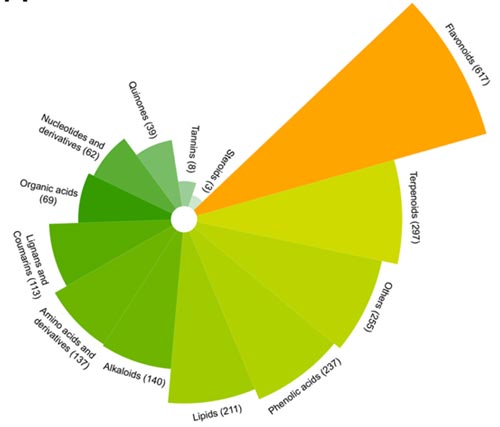
Classification of 2,188 Metabolites in Chrysanthemum Tea
Network pharmacology analysis identified 40 substances from the 2,188 metabolites that met the criteria for "active ingredients in traditional Chinese medicine." Nine of these substances, such as baicalin, hesperetin, and hydroxymatrine, achieved "high oral absorption (OB ≥ 30%) and high medicinal properties (DL ≥ 0.18)." These ingredients are often associated with heat-clearing, eye-improving, and vascular protection in traditional Chinese medicine.
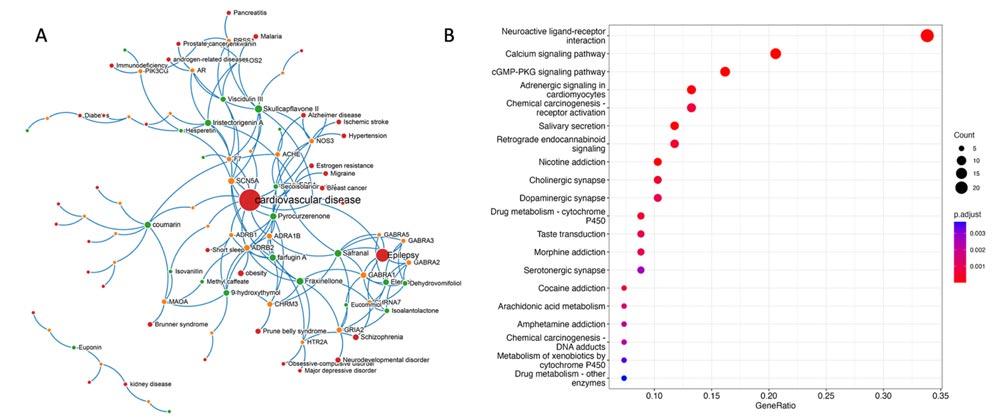
Network pharmacology reveals associations between 25 active ingredients and disease prevention.
Further analysis revealed that 25 active ingredients may be closely related to human health, including prevention of cardiovascular diseases (such as hypertension and myocardial problems), epilepsy, neurodevelopmental disorders, and Alzheimer's disease.
The target genes of these active ingredients were enriched in key pathways such as "neuroactive ligand-receptor interaction," "calcium signaling," and "cardiomyocyte adrenergic signaling," suggesting potential roles in antioxidant, neuroprotective, and cardiovascular regulation.
02. Advantages of Ziju
Researchers compared the metabolic profiles of four chrysanthemum teas and found that Ziju is the most unique.
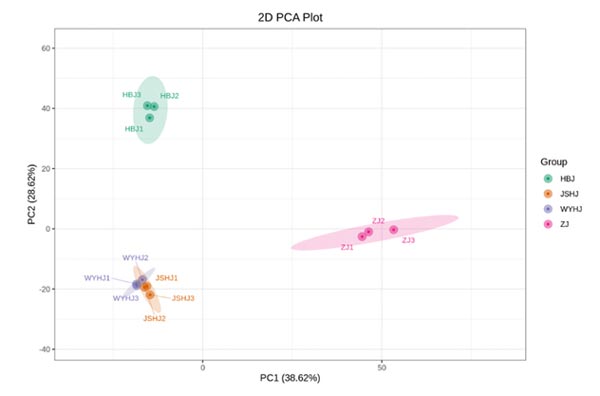
The metabolic profile of Ziju (ZJ) differs from that of other chrysanthemums
Specifically, Ziju contains a total of 1,955 metabolites, 65 of which are not found in the other three chrysanthemum varieties. Among these unique components, terpenes and flavonoids account for a higher proportion.
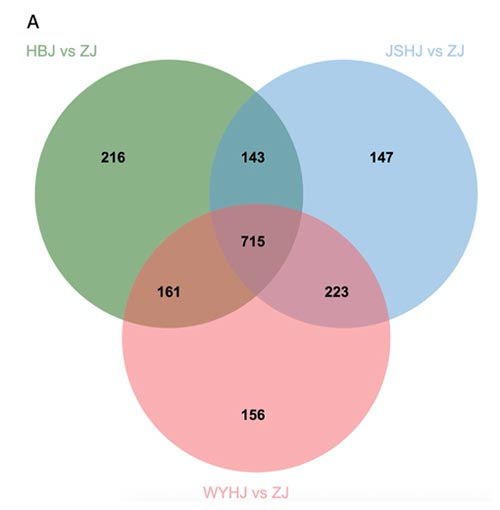
Number of Different Metabolites in Ziju (ZJ) from Other Chrysanthemums
Compared with Ziju and the other three chrysanthemums, their differential metabolites are primarily concentrated in the flavonoid synthesis pathway, such as "flavonoid aglycone III" and "luteolin aglycone." Flavonoids are key to antioxidant and cardiovascular protection.
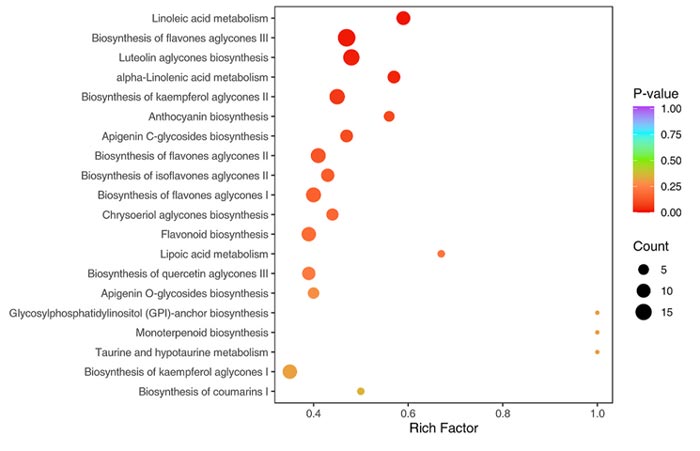
ZJ's differential metabolites are concentrated in the flavonoid synthesis pathway.
Especially for the 25 active ingredients associated with health mentioned above, Ziju has a greater advantage in the accumulation of metabolites related to these pathways, making it suitable for those concerned about cardiovascular and neurological health.
03. The other three species each have their own unique characteristics.
Although Ziju stands out in terms of metabolic uniqueness and active ingredients, Hangbai Chrysanthemum, Wuyuan Royal Chrysanthemum, and Jinsi Royal Chrysanthemum are not inferior and each has its own advantages.
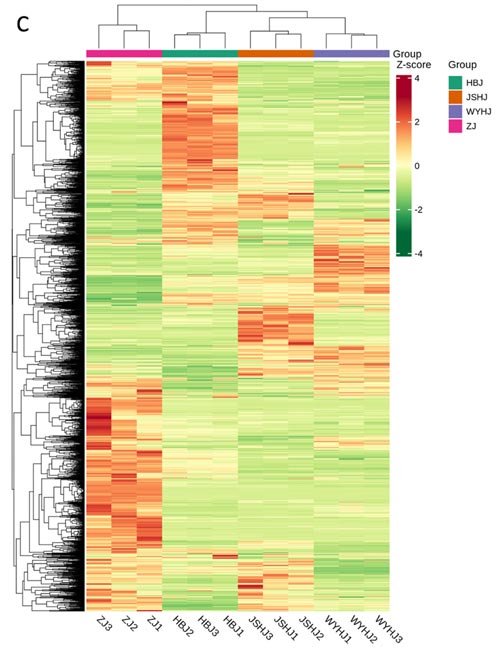
Comparison of metabolites of Ziju, Hangbai Chrysanthemum, Wuyuan Royal Chrysanthemum, and Jinsi Royal Chrysanthemum
For example, Hangbai Chrysanthemum, Wuyuan Royal Chrysanthemum, and Jinsi Royal Chrysanthemum contain a richer variety of nutrients.
Researchers detected a total of 2,123 metabolites in these three chrysanthemum species, 1,750 of which were shared by all three, including flavonoids, phenolic acids, and amino acids, which can meet the nutritional needs of daily drinking.
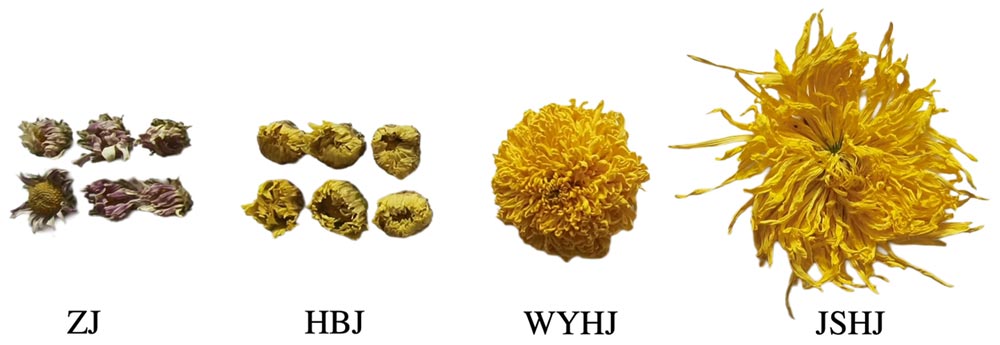
Ziju, Hangbai Chrysanthemum, Wuyuan Royal Chrysanthemum, and Jinsi Royal Chrysanthemum
Furthermore, as a beverage, chrysanthemum tea is particularly important for both taste and appearance. Among these, Hangzhou Chrysanthemum has a refreshingly sweet taste, making it suitable for everyday drinking. Wuyuan Royal Chrysanthemum and Golden Silk Royal Chrysanthemum have large petals and a beautiful appearance, making them ideal for pairing with tea sets. Their rich, refreshing fragrance makes them popular "beautiful" chrysanthemum teas.
◆ Conclusion
If you prioritize active ingredients and potential health benefits, Purple Chrysanthemum is a better choice. It has a high concentration of unique metabolites and flavonoids, and is more active in cardiovascular and neurological pathways, making it suitable for those who focus on health.
If you prioritize taste, appearance, and value, Hangzhou Chrysanthemum, Wuyuan Royal Chrysanthemum, and Golden Silk Royal Chrysanthemum are all excellent choices. Their ingredients meet daily drinking needs and are more readily available on the market.

%20--%3e%3c!DOCTYPE%20svg%20PUBLIC%20'-//W3C//DTD%20SVG%201.1//EN'%20'http://www.w3.org/Graphics/SVG/1.1/DTD/svg11.dtd'%3e%3csvg%20version='1.1'%20id='图层_1'%20xmlns='http://www.w3.org/2000/svg'%20xmlns:xlink='http://www.w3.org/1999/xlink'%20x='0px'%20y='0px'%20width='256px'%20height='256px'%20viewBox='0%200%20256%20256'%20enable-background='new%200%200%20256%20256'%20xml:space='preserve'%3e%3cpath%20fill='%23FFFFFF'%20d='M194.597,24.009h35.292l-77.094,88.082l90.697,119.881h-71.021l-55.607-72.668L53.229,232.01H17.92%20l82.469-94.227L13.349,24.009h72.813l50.286,66.45l58.148-66.469V24.009z%20M182.217,210.889h19.566L75.538,44.014H54.583%20L182.217,210.889z'/%3e%3c/svg%3e)



